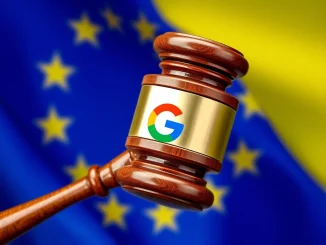
The winds of change are blowing strong in the cryptocurrency world, and South Korea is stepping up to take a leading role. Get ready to witness a significant shift in the digital asset landscape as a key South Korean legislator is set to propose a comprehensive digital asset bill next month. This isn’t just another piece of legislation; it’s a focused effort to bring clarity and security to the burgeoning crypto market, with stablecoins taking center stage. Are you curious to know how this could reshape the future of cryptocurrency in South Korea and beyond? Let’s dive into the details.
South Korea’s Proactive Stance on Cryptocurrency Regulation
South Korea has consistently been a hotbed for cryptocurrency activity, with a vibrant and engaged community. However, like many nations, the regulatory framework has been catching up to the rapid pace of innovation. Now, Democratic Party of Korea (DPK) lawmaker Min Byoung-dug is taking decisive action. He’s spearheading the charge with a new digital asset bill designed to bring much-needed structure and oversight to the sector. According to the Korea Economic Daily, this bill is not just a broad stroke; it’s laser-focused, particularly on stablecoins, recognizing their growing importance and potential impact on the financial system.
Why is South Korea prioritizing this now? Several factors are likely at play:
- Growing Market Maturity: The cryptocurrency market is no longer a niche interest. It’s becoming increasingly mainstream, demanding robust regulatory frameworks to ensure investor protection and market stability.
- Global Regulatory Trends: Nations worldwide are grappling with how to regulate digital assets. South Korea’s move signals a proactive approach to align with and potentially lead global regulatory standards.
- Stablecoin Significance: Stablecoins, pegged to fiat currencies or other assets, are crucial for facilitating transactions within the crypto ecosystem. Their stability is paramount, and regulation is seen as vital to maintaining trust and preventing systemic risks.
Decoding the Digital Asset Bill: What’s in it for Stablecoins?
So, what exactly does this proposed digital asset bill entail? The core focus, as mentioned, is on stablecoins. Here’s a breakdown of the key provisions that are making waves in the crypto community:
- Licensing for Stablecoin Issuers: This is a game-changer. The bill proposes that only entities licensed by the Financial Services Commission (FSC) will be authorized to issue stablecoins in South Korea. This immediately introduces a layer of accountability and control, ensuring that issuers meet certain standards and are subject to regulatory oversight.
- Focus on Stablecoin Issuance: Interestingly, the bill reportedly does not impose specific qualification requirements for issuing other types of digital assets. This highlights the particular concern and focus on stablecoins due to their nature and potential for wider financial impact.
- Self-Regulatory Body: To further enhance oversight, the bill calls for the establishment of a self-regulatory body. This body would be responsible for overseeing crucial aspects of the cryptocurrency exchange landscape, including token listings, delistings, and ensuring ongoing compliance with regulations. Think of it as an industry-led initiative working in tandem with the FSC to maintain market integrity.

Why Regulate Stablecoins? Unveiling the Benefits
You might be wondering, why all the fuss about regulating stablecoins? What are the actual benefits of bringing these digital assets under a regulatory umbrella? The advantages are manifold and touch upon several critical aspects of a healthy financial ecosystem:
| Benefit | Description |
|---|---|
| Enhanced Stability | Regulation aims to ensure that stablecoins truly live up to their name. By requiring licensed issuers and potentially mandating reserves or audits, the bill seeks to minimize the risk of stablecoins losing their peg to their underlying asset, which could trigger broader market instability. |
| Investor Protection | Licensing and oversight provide a layer of protection for users of stablecoins. It increases transparency and accountability, making it less likely for fraudulent schemes or poorly managed projects to thrive. This is crucial for building trust and encouraging wider adoption of digital assets. |
| Market Integrity | A well-regulated stablecoin market contributes to the overall integrity of the cryptocurrency ecosystem. It reduces the potential for manipulation, illicit activities, and systemic risks, fostering a more mature and trustworthy market environment. |
| Clarity and Legal Certainty | The digital asset bill provides much-needed legal clarity. By defining the rules of the game for stablecoin issuance and operation, it reduces ambiguity and encourages responsible innovation within the sector. |
Navigating the Challenges: Self-Regulation and Beyond
While the proposed digital asset bill is a significant step forward, it’s important to acknowledge the challenges that lie ahead. Implementing effective regulation in the rapidly evolving world of cryptocurrency is no easy feat. The creation of a self-regulatory body is a particularly interesting aspect. How will this body function in practice? What powers will it wield, and how will it interact with the FSC? These are crucial questions that will need to be addressed as the bill progresses.
Some potential challenges to consider:
- Defining Scope: Clearly defining what constitutes a stablecoin and which digital assets fall under the purview of the bill will be critical. The nuances of different types of stablecoins and other digital assets need careful consideration.
- Enforcement and Compliance: Ensuring effective enforcement of the regulations and achieving high levels of compliance from industry participants will be an ongoing task. The self-regulatory body will play a key role here, but its effectiveness will depend on its structure, resources, and industry cooperation.
- Innovation vs. Regulation: Striking the right balance between fostering innovation and implementing robust regulation is always a delicate act. The goal is to create a framework that safeguards the market without stifling the potential for growth and technological advancement in the digital asset space.
Min Byoung-dug’s Vision: Shaping the Future of Digital Assets in South Korea
Lawmaker Min Byoung-dug’s initiative to propose this digital asset bill underscores South Korea’s commitment to becoming a leader in the digital economy. By focusing on stablecoin regulation, the bill addresses a critical area of concern in the crypto world and demonstrates a forward-thinking approach. His vision is likely to shape not just the South Korean cryptocurrency landscape but also influence global regulatory discussions. The move is being closely watched by industry players and regulators worldwide as a potential model for navigating the complexities of cryptocurrency regulation.
Conclusion: A Secure Step Towards Mainstream Crypto Adoption
South Korea’s proposed digital asset bill, with its emphasis on stablecoin regulation, represents a pivotal moment for the cryptocurrency industry. It’s a clear signal that governments are taking digital assets seriously and are moving towards establishing comprehensive regulatory frameworks. While challenges remain in implementation and enforcement, this initiative is a significant stride towards creating a more secure, stable, and trustworthy environment for cryptocurrency innovation and adoption. As the bill moves forward, the world will be watching to see how South Korea’s bold move shapes the future of the global digital asset market. Stay tuned for further updates as this exciting development unfolds!



